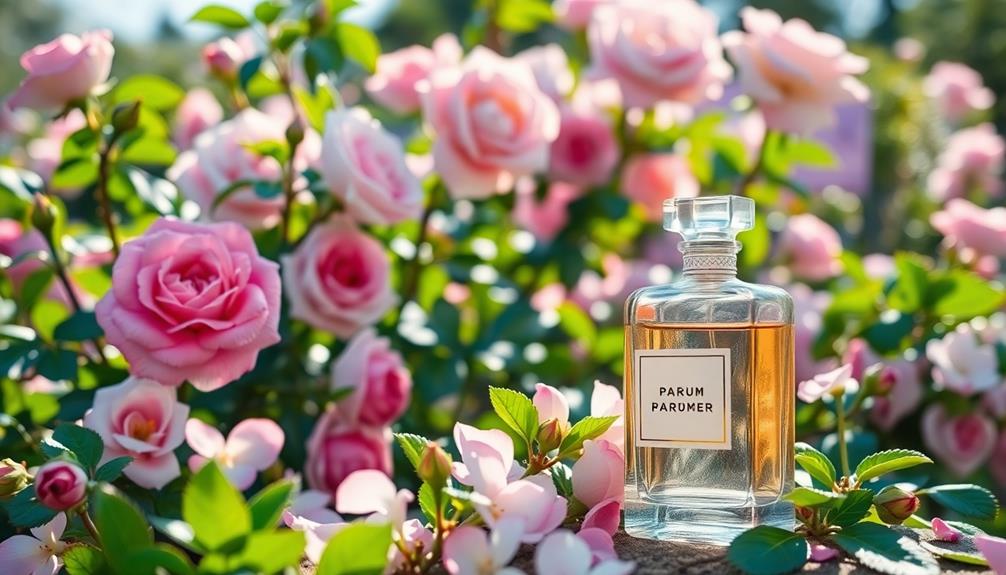Delina smells like a beautiful mix of fruity and floral notes. You'll start with bright, lively top notes of rhubarb, lychee, and bergamot. As the scent develops, you'll notice enchanting heart notes of Turkish rose, peony, and lily-of-the-valley. Finally, it settles into warm base notes of vanilla, white musk, cashmeran, and cedarwood. This blend creates a captivating fragrance you can wear for both daytime and evening events. It's perfect for sunny days and special occasions, adding a touch of elegance to your style. There's even more to discover about this lovely scent, so stick around!
Key Takeaways
- Delina opens with lively top notes of rhubarb, lychee, and bergamot, creating a bright fruity introduction.
- The heart features enchanting floral notes of Turkish rose, peony, and lily-of-the-valley for a romantic embrace.
- Base notes of vanilla, cashmeran, white musk, and cedarwood add depth and warmth to the fragrance.
- Overall, Delina is a beautiful floral journey that enhances personal style and beauty.
- It embodies classic femininity, evoking nostalgia and luxurious experiences, suitable for various occasions.
Introduction
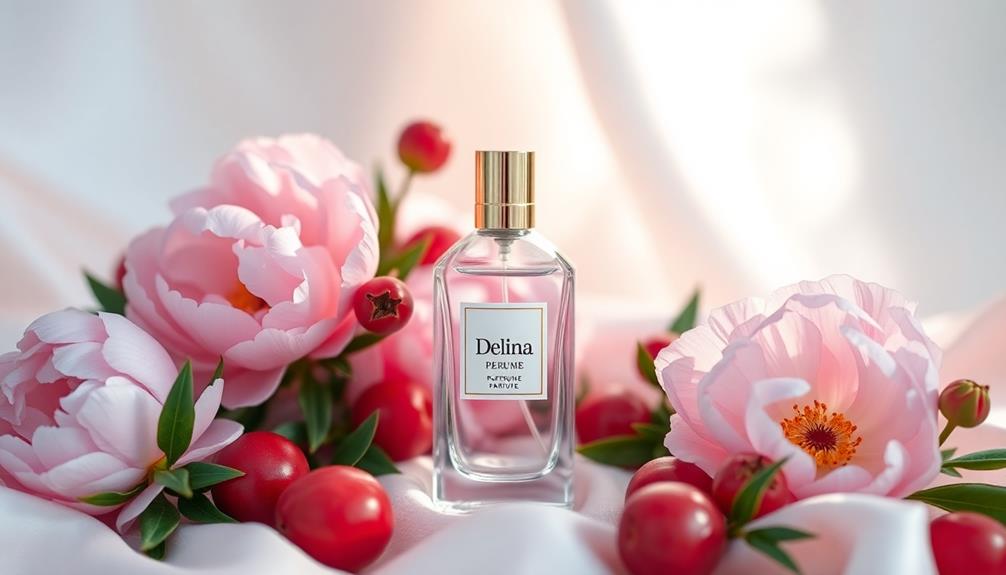
Delina by Parfums de Marly offers a captivating olfactory experience that blends fruity and floral notes seamlessly. When you first encounter Delina, you'll notice the fresh and tangy top notes of rhubarb, lychee, and bergamot. These notes create a delightful introduction, drawing you into the fragrance's enchanting world.
As the scent unfolds, the heart reveals a luxurious blend of Turkish rose, peony, and lily-of-the-valley, crafting a floral fragrance that's both sweet and sensual. The base notes of vanilla, cashmeran, white musk, and cedarwood add depth and warmth, making the overall composition rich and complex. The peony fragrance description paints a picture of soft, delicate petals that bring a fresh, slightly rosy scent to the heart of the composition. This light floral note seamlessly intertwines with the deeper, more velvety accords, enhancing the perfume’s balance between softness and intensity. Together, these elements create a timeless allure, enveloping the wearer in a captivating and elegant aura.
This balance between fruity and floral elements makes Delina stand out, evoking a nostalgic ambiance that might remind you of an elegant 18th-century powder room.
One of the best features of Delina is its impressive longevity, lasting around 6-8 hours, along with moderate sillage. You can wear it confidently, knowing it'll remain noticeable without being overwhelming.
Whether it's a daytime outing or an evening event, Delina is the perfect companion, ensuring you leave a lasting impression.
Description of the Smell
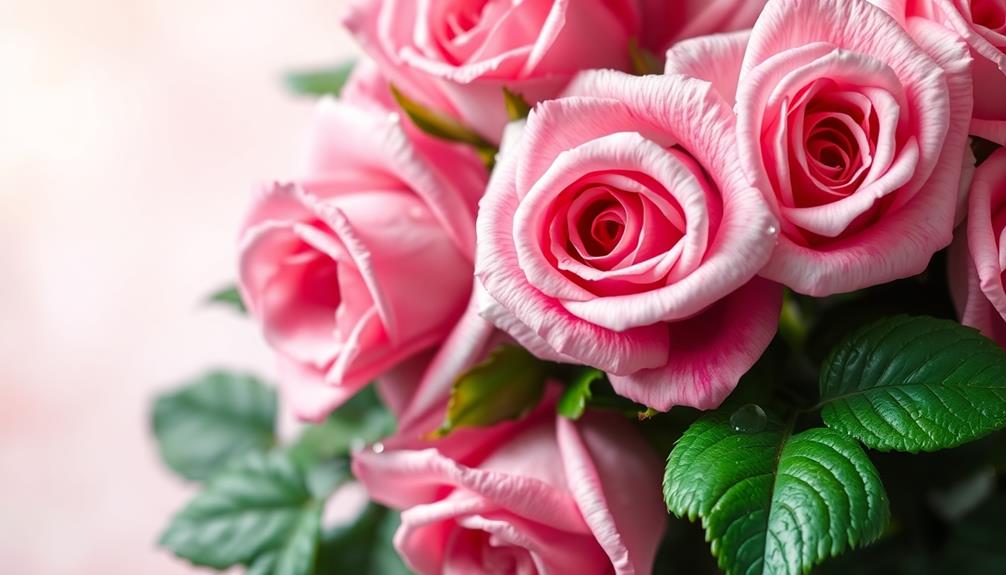
The scent of Delina unfolds beautifully, showcasing a modern floral bouquet that captivates the senses. This eau de parfum relishes in its sweet and fruity opening, featuring notes of rhubarb, lychee, and bergamot. These top notes create a fresh, tangy welcome that leads you into the heart of the fragrance.
As you breathe in deeper, the floral notes of Turkish rose, peony, and lily of the valley bloom, wrapping you in their enchanting embrace.
Delina's scent profile is a delightful balance of sweetness and freshness, making it suitable for both daytime and evening wear. It evokes a classic femininity, reminiscent of an elegant 18th-century ambiance.
As the fragrance settles, the base notes come forward, bringing warmth and complexity with hints of vanilla, cashmeran, white musk, cedarwood, and incense.
This warm dry down invites you to linger in its embrace, enhancing the overall experience. Whether you're dressing up for a special occasion or enjoying a casual day out, Delina's captivating aroma is sure to leave a lasting impression, making you feel effortlessly beautiful.
Source and Composition
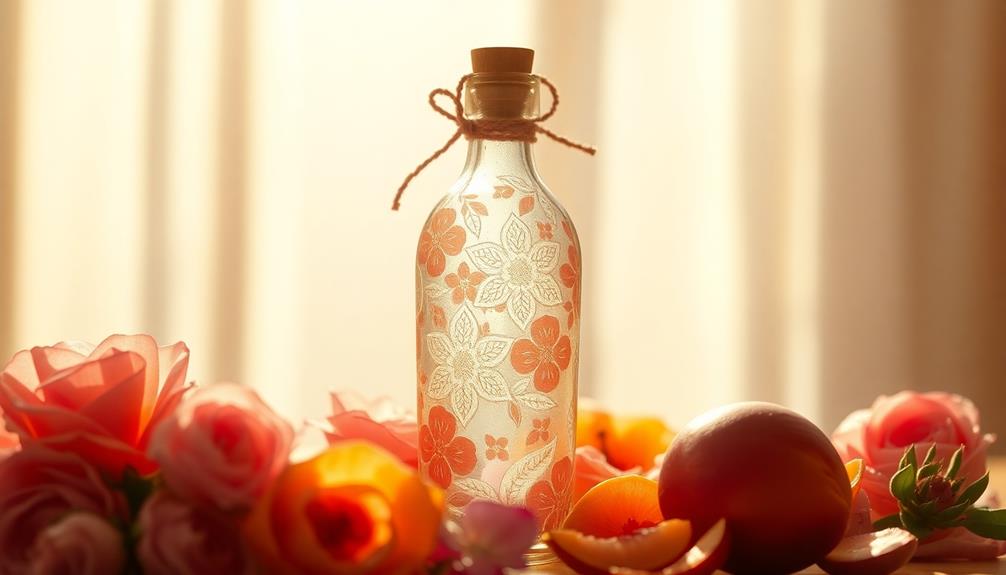
Crafted from a blend of exquisite ingredients, Delina showcases a modern floral bouquet that captivates with elegance. As you experience this fragrance, you'll notice its delightful balance of floral accords and tangy notes. It opens with a refreshing burst of rhubarb, lychee, and bergamot essence, inviting you into its world. These top notes provide a fruity introduction that feels both lively and bright.
Moving deeper, the heart of Delina reveals rich layers of Turkish rose, peony, and a hint of vanilla. This combination creates a sweet and sensual experience, making it perfect for any occasion. You can almost feel the warmth and beauty of each flower as it unfolds.
At the base, the composition includes cashmeran, white musk, cedarwood, and incense. These notes give Delina its depth and warmth, rounding out the scent beautifully.
Together, these elements work in harmony to create a captivating fragrance that feels fresh and feminine. So, if you're looking for a scent that combines floral elegance with fruity charm, Delina is sure to become a favorite in your collection!
Typical Scenarios or Environments
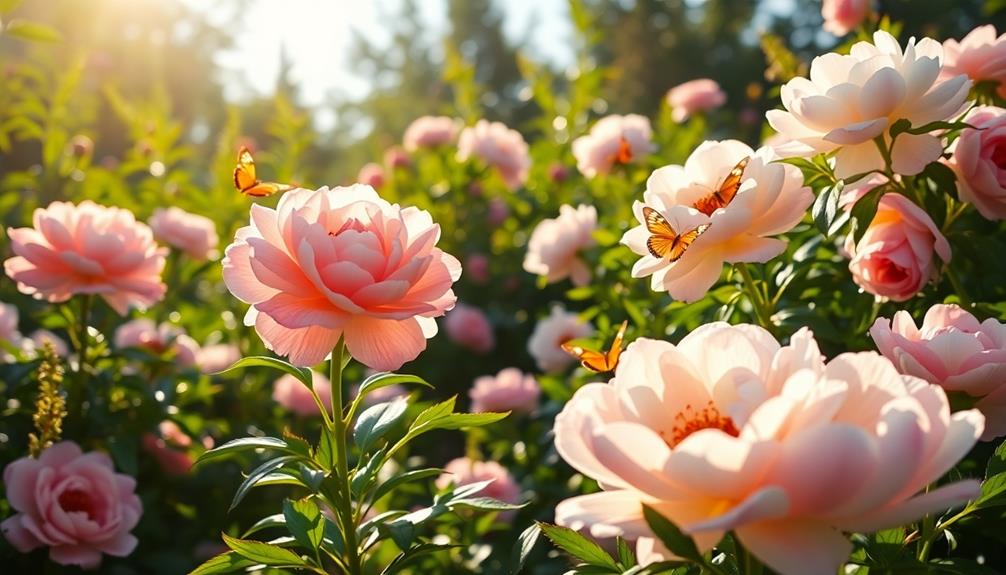
For those sunny spring and summer days, this fragrance shines as the perfect companion. Delina brings a delightful blend of floral and fruity notes that uplift your mood and match the vibrant atmosphere, much like the lively ambiance of regional water parks.
Picture yourself wearing Delina at a garden party, where its sophisticated scent draws compliments from friends and family.
This fragrance is ideal for special occasions, like weddings or romantic dinners, where you want to feel elegant and fresh. It transitions easily from casual daytime hangouts to more refined evening events, making it a versatile choice. With its captivating blend, the Versace Eros Flame fragrance profile perfectly balances fiery intensity with subtle warmth, embodying passion and sophistication. Notes of citrus, spice, and deep woods ensure you’ll leave a lasting impression, whether you’re enjoying an intimate gathering or a grand celebration. Its complex yet harmonious composition makes it a timeless addition to your collection.
You'll love how its impressive longevity of 6-8 hours keeps you smelling fabulous from the office to an outdoor gathering.
Delina creates an elegant ambiance that's perfect for sophisticated settings. Imagine walking into a beautifully decorated room, and the enchanting scent of Delina fills the air—it's sure to turn heads!
Whether you're enjoying a sunny picnic or dancing at a party, Delina enhances every moment. So, embrace the joy of spring and summer with this gorgeous fragrance, and let it be your go-to scent for all your delightful adventures!
Emotional or Cultural Associations

Delina embodies classic femininity and evokes a sense of nostalgia, transporting you to elegant memories and glamorous settings. When you wear Delina, you're not just enjoying a fragrance; you're stepping into a romantic atmosphere filled with the enchanting scent of Turkish rose and rhubarb. This blend creates a luxurious experience that reminds you of refined 18th-century powder rooms, making you feel special and sophisticated.
The power of imagination also plays a role, as the fragrance can mobilize mental potential and enhance creativity, allowing you to envision transformative possibilities in your life, similar to the insights shared about mental well-being.
Many people associate Delina with significant events, viewing it as a status symbol among fragrance lovers. This adds to its emotional significance, as it connects you to cherished moments and celebrations.
The sweet and sensual profile of Delina not only brings positive personal emotions but also attracts admiration from those around you. You might find that compliments flow freely, enhancing your social experience while wearing it.
Delina's nostalgic scent lingers in the air, enriching your memories and surroundings. It allows you to celebrate your individuality while embracing the cultural ideals of beauty.
Health or Safety Considerations
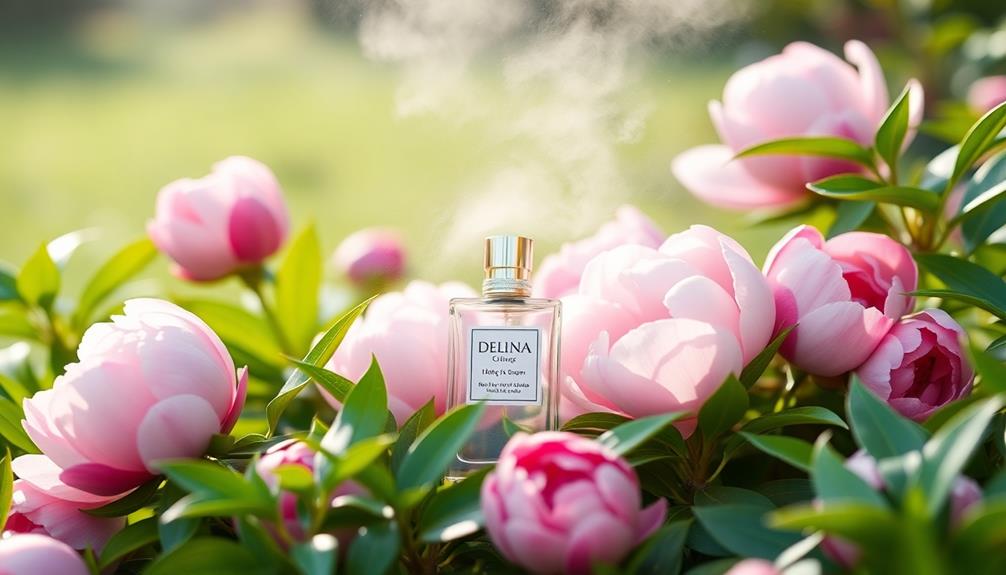
While enjoying the luxurious scent of Delina, it's important to be mindful of potential health and safety considerations. Delina contains ingredients like Ethylhexyl Methoxycinnamate, which can be sensitizing for some people, especially those with skin sensitivities.
You might encounter common allergens such as Limonene, Linalool, Citral, and Geraniol that could cause reactions if you're sensitive. Before applying Delina fully, it's wise to perform a patch test. This simple test helps you check for any adverse skin reactions.
Because the fragrance includes alcohol denat., apply it only to intact skin. Avoid using it on broken or irritated skin to minimize irritation risks. To keep Delina in top shape, store it in a cool, dry place, away from direct sunlight.
This helps maintain its integrity and reduces the chances of chemical reactions that could lead to skin irritations. By taking these precautions, you can fully enjoy the delightful aroma of Delina without worrying about any unwanted surprises.
Always listen to your body, and if you notice anything unusual, stop using the fragrance and consult with a healthcare professional.
Final Thoughts
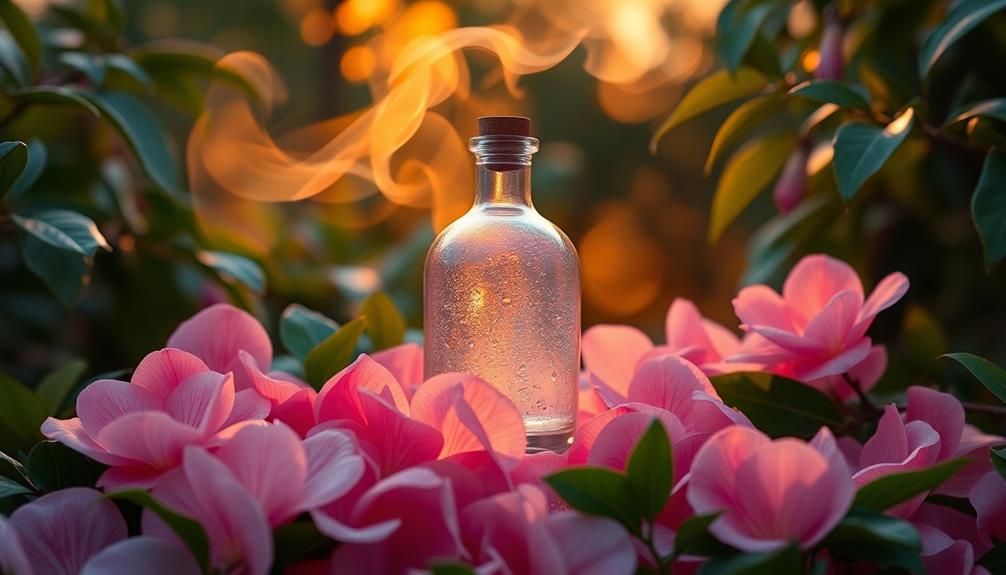
When you explore the enchanting scent of Delina, you'll find that its unique blend of fruity and floral notes creates a captivating experience. The tangy notes of lychee and fresh rhubarb open the fragrance with a delightful burst, leading you into a heart filled with jammy rose, peony, and lily of the valley.
These floral accords are well blended, making the scent feel elegant and sophisticated. In addition to its alluring fragrance, taking care of your skin with ingredients like glycolic acid can enhance your overall beauty experience, promoting a smoother complexion and improved skin texture benefits of glycolic acid.
As you wear Delina, you'll notice how the vanilla accentuates the sensuality of the fragrance, wrapping you in warmth. Base notes like cashmeran, white musk, and cedarwood add depth, creating a signature scent that's quite different from what you might be used to.
Users often rave about its impressive longevity of 6-8 hours and moderate sillage, making it perfect for both daytime and evening occasions.
Ultimately, Delina offers a luxurious experience, reminiscent of an 18th-century powder room. If you're looking to add a captivating fragrance to your collection, Delina is an excellent choice.
It's not just a scent; it's a statement. So go ahead, indulge yourself in this beautiful floral journey!
Frequently Asked Questions
What Does Delina Smell Similar To?
You might find Delina reminiscent of other rose-centric fragrances like Chloé Roses or Armani Prives Pivoine Suzhou. Its fruity rhubarb and lychee notes can also evoke comparisons to Lush's Rose Jam, offering a sweet experience.
What Does the Scent Delina Smell Like?
You'll experience a vibrant blend of fruity and floral notes, with fresh rhubarb and lychee leading. The heart reveals a lush bouquet of roses, while warm base notes provide depth, creating an enchanting fragrance overall.
Why Is Delina so Popular?
Delina's popularity stems from its luxurious blend of fruity and floral notes, impressive longevity, and moderate sillage. You'll appreciate how it makes you feel elegant for both daytime and special occasions.
Is Delina Perfume for Summer or Winter?
Delina's best suited for summer, with its vibrant fruity-floral notes that evoke freshness. While you can wear it in winter, you'll likely appreciate its lightness more during warmer months, enhancing your sunny outings.
